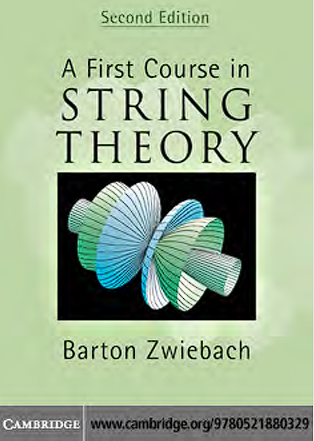
A First Course in String Theory
Author: Barton Zwiebach Category: Matematika Fisika Publisher: CAMBRIDGE ISBN: 978-0-511-47932-8 It has been almost five years since I finished writing the first edition of A First Course
in String Theory. I have since taught the undergraduate string theory course at MIT three
times, and I have received comments and suggestions from colleagues all over the world. I
have learned what parts of the book are most challenging for the students, and I have heard
requests for extra material.
As in the first edition, the book is broadly divided into Part I (Basics) and Part II (Devel
opments). In this second edition I have improved the clarity of many arguments and the
general readability of Part I. This part is studied by the largest number of readers, many of
them independently and outside of the classroom setting. The changes should make study
easier. There are more figures and the number of problems has been increased to better
cover the range of ideas developed in the text. Part I has five new sections and one new
chapter. The new sections discuss the classical motion of closed strings, cosmic strings,
and orbifolds. The new chapter, Chapter 14, is the last one of Part I. It explains the basics
of superstring theory.
Part II has changed as well. The ordering of chapters has been altered to bring T
duality earlier into the book. The material relevant to particle physics has been collected
in Chapter 21 and includes a new section on moduli stabilization and the landscape.
Chapter 23 is new and is entirely devoted to strong interactions and the AdS/CFT cor
respondence. I aim to give there a gentle introduction to this lively area of research. The
number of chapters in the book has gone from twenty-three to twenty-six, a nice number
to end a book on string theory!
I want to thank Hong Liu and Juan Maldacena for helpful input on the subject of
AdS/CFT. Many thanks are also due to Alan Guth, who helped me teach the string the
ory course in the spring term of 2007. He tested many of the new problems and offered
very valuable criticism of the text
Back